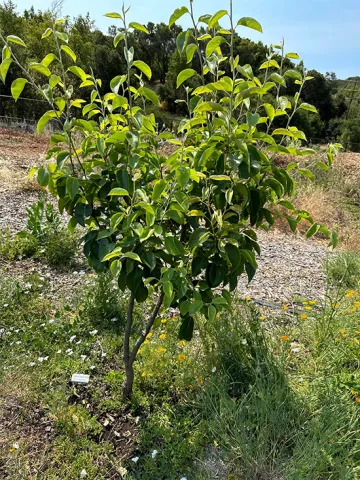
Why prune fruit trees?
All fruit trees require pruning for optimum vigor and fruit production. Pruning is also a way to control tree size, making care and harvesting easier. The first pruning of the fruit trees in the Edible Demo Garden was done at the time of planting. Following recommendations for keeping the trees small, a hard heading cut was made on the new bare root trees to remove approximately two-thirds of the main trunk to about knee height. In the following years, both winter and summer pruning have helped to shape the trees and maintain their health. Pruning in the winter when a tree is dormant helps to invigorate it and encourage new growth. Summer pruning is done to remove excess growth and control the dimensions and shape of the tree. Ideally, pruning should strive for a balance between the growth of new wood and the removal of old wood. The goal is also to allow sunlight to reach the lower limbs to enhance fruit production.
Pruning to remove any damaged, diseased, dying, or dead limbs is always important. Rootstock suckers and sprouts emerging below the graft section of the tree need to be pruned off. Shoots growing from the rootstock deplete energy from the scion or grafted part of the tree where the fruit is formed. Likewise, water sprouts are suckers that grow upright in the crown of the tree, and they also should be removed to direct the tree’s energy to fruit-producing branches.
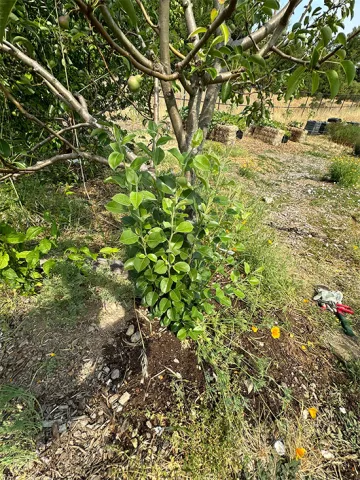 | 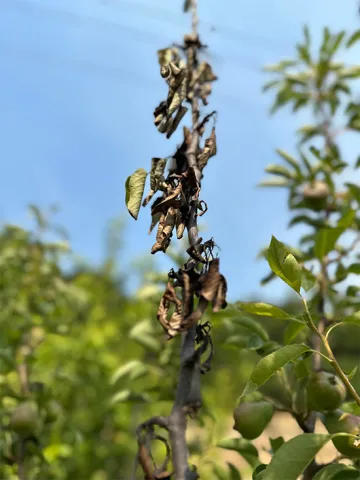 | 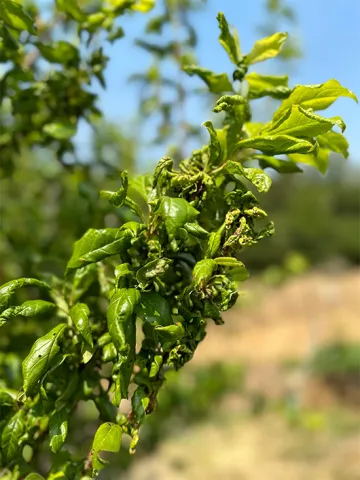 |
Why should fruit be thinned?
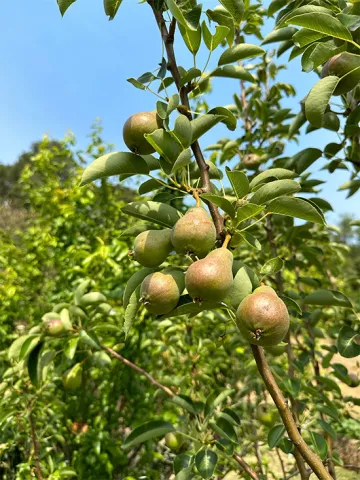
What common diseases have affected the trees in the Edible Demo Garden?
Sadly, organic gardens are not immune to the bacterial and fungal diseases that frequently affect fruit trees. Fire blight is a bacterial infection that attacks pome fruits like pear, apple, and quince trees. Young blossoms, shoots, and fruit shrivel and blacken, causing branches to appear burned. The disease can spread rapidly so it’s important to cut diseased branches back into about 12 inches of healthy wood to remove all the infected tissue. The bacteria can be transmitted by pruning tools, so they need to be sterilized before making each cut. In the Edible Demo Garden, a young Bartlett pear tree was infected by fire blight this year.
A frequent problem for stone fruits such as apricots, peaches, and plums, is leaf curl. This is caused by a fungal infection that attacks the leaves, shoots, and fruit, causing leaves to become thickened and pucker and fruit to drop. The fungus overwinters and becomes active in the spring when it is spread by splashing rainfall. The leaf curl fungus has infected an Asian plum tree in the Edible Demo Garden.
Copper-based fungicides can be used for the prevention of both fire blight and leaf curl; however, the timing of the applications is important. Treatment needs to be initiated early before any signs of disease are visible. Because copper is a naturally occurring mineral, it is acceptable for use in organic agriculture.

